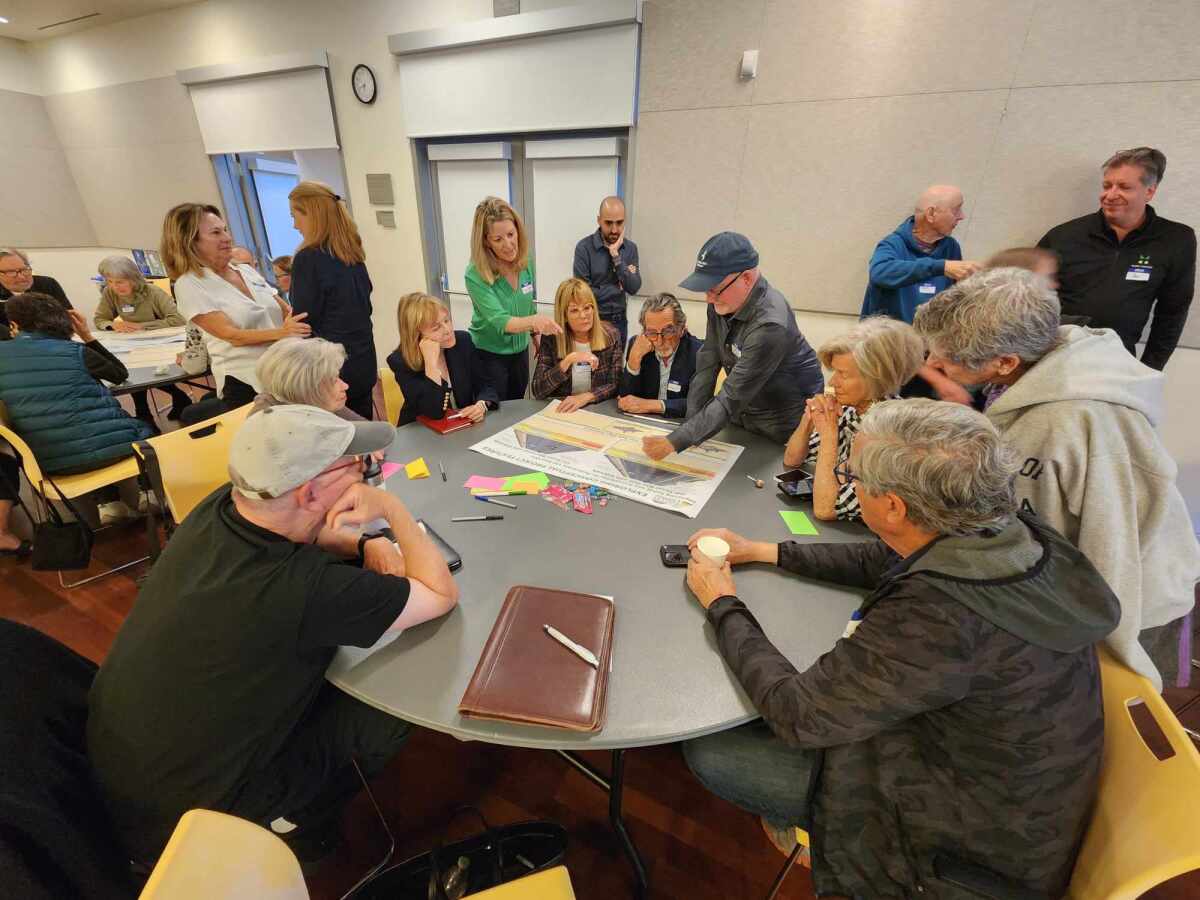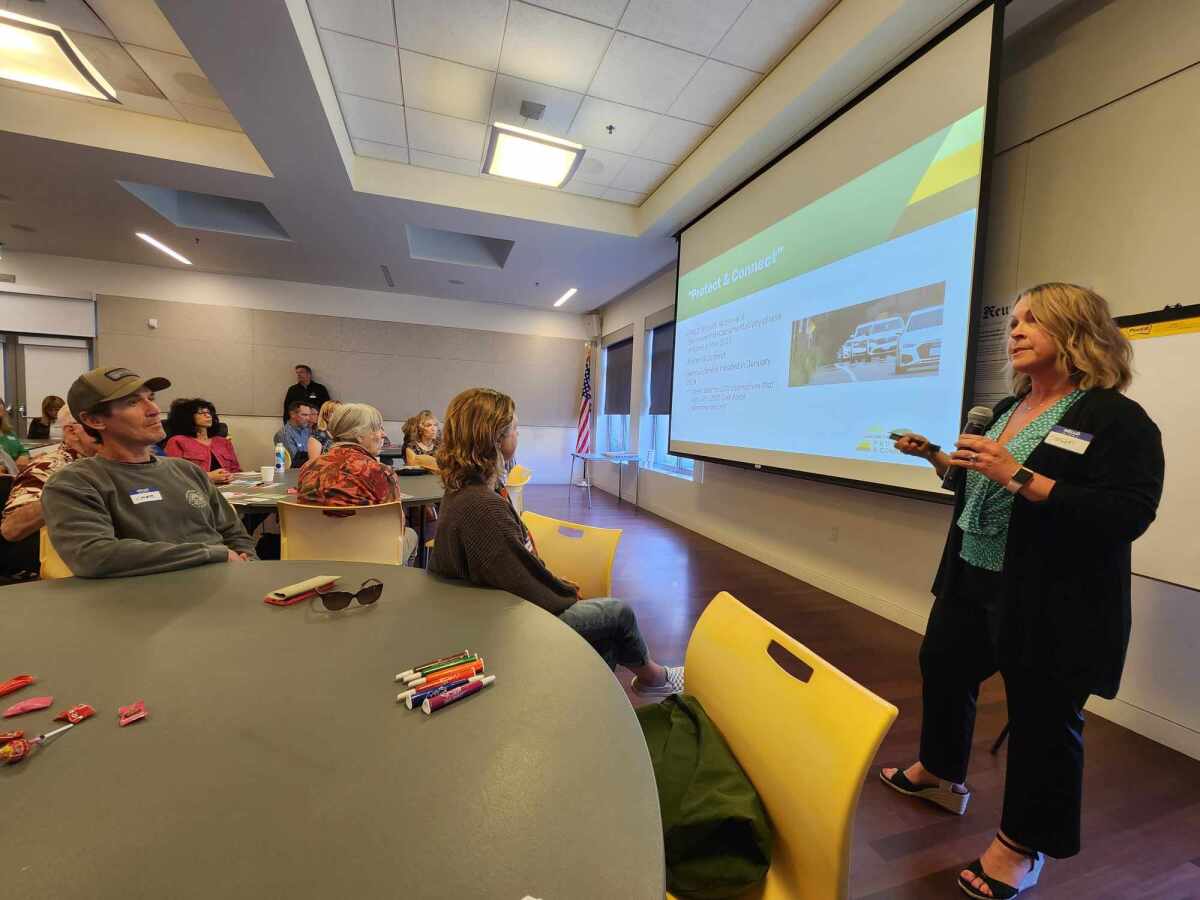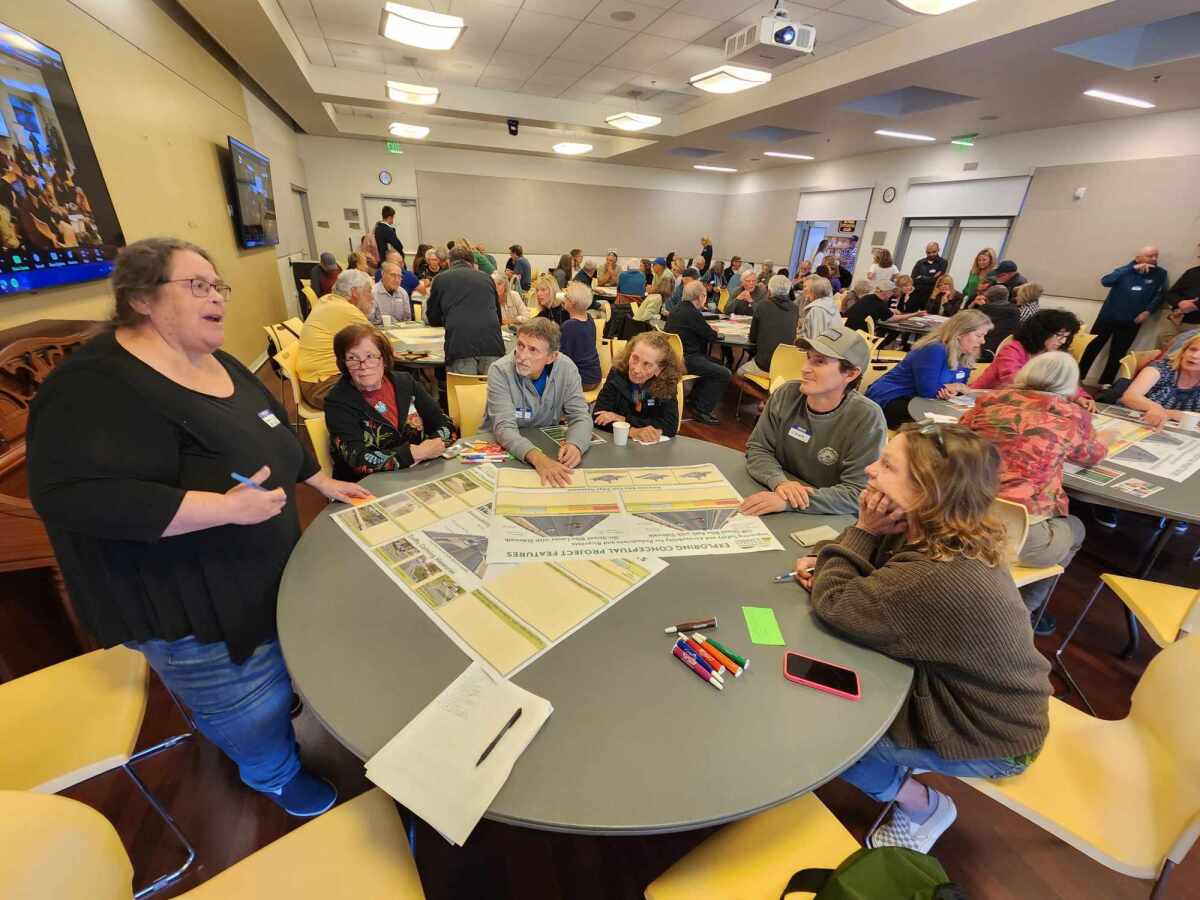Workshop: Community ponders priorities for future of Laguna Canyon Road

- Share via
A community workshop saw dozens of people fill a room Tuesday, as stakeholders weighed in regarding the future of Laguna Canyon Road.
The turnout at the Laguna Beach Community and Susi Q Center demonstrated the widespread interest in the Laguna Canyon Road Protect and Connect project, which is expected to cover a 2.5-mile stretch of roadway between El Toro Road to the north and Canyon Acres Drive to the south.
According to the city, features under consideration as the proposed project takes shape include underground utilities, bikeways and pedestrian paths, improved crossings, signal enhancements, enhanced transit and trolley stops and landscaping that calls for native plants to help conserve water.
A Laguna Canyon Road Task Force — made up of Caltrans, city officials, residents and other stakeholders — came to the City Council with a report in September 2015. More recently, the City Council in January approved action to proceed with the relinquishment of Laguna Canyon Road by Caltrans.
“There was a lot of discussion about the pros and cons, should we or should we not consider that relinquishment, taking the road back from Caltrans and putting it into city ownership,” said Susan Harden, a consultant for the Laguna Canyon Road Protect and Connect project. “Now, that hasn’t happened, but what did happen was the council made a decision to move forward with the process of discussing that relinquishment.”
Laguna Beach has sent a letter to Caltrans stating its intent to enter formal negotiations regarding the relinquishment of the roadway, which is one of three primary ways in and out of town.
“What that does is open the door to develop some alternatives that are more closely aligned with that task force report from 2014-15,” Harden added.

Tom Perez, assistant director of public works for Laguna Beach, said the city expects to hear back from Caltrans on whether it would proceed with the relinquishment of the roadway in the summer.
“In the meantime, the city’s working on putting together our own internal estimates of what we feel Caltrans should give to the city to compensate for taking that roadway,” Perez said. “That’s going to be looking at things such as what repairs are needed, what maintenance is needed. … This relinquishment is a three-to-five-year process. It’s nothing that we’re going to be done with right away.”
Perez said the city is working on funding strategies, including looking at grant programs, to help with the associated costs.
Harden reviewed a community survey tracking commuter tendencies on Laguna Canyon Road. The questionnaire, launched in the middle of March, had roughly 2,500 respondents as of Tuesday. The preliminary results show that about two-thirds of respondents use the corridor to get to and from home and 84% said they utilize the area for recreation.
Almost all of those who took the survey, 98%, said their primary means of transportation through the corridor is via vehicle. Among secondary methods of using the route, 16% said they walk, and 12% said they ride bicycles.
Eighty-seven percent of the respondents said the main challenge in traversing the canyon roadway is congestion. Approximately one-third of those surveyed considered left-hand turns a troublesome task.

Project leaders called on workshop attendees to share their priorities, with a breakout session for groups sitting together at tables to share their design preferences for bicycle and pedestrian safety improvements. Handouts also asked the groups to rate the importance of undergrounding utilities and share ideas for traffic calming in the corridor.
There was general agreement among the participants that underground utilities would be desirable, but uncertain costs caused consternation. Several also hoped to separate bikes and pedestrians from vehicular traffic.
“About 20% of the city’s population lives there,” resident Penelope Milne said of the canyon corridor under consideration. “People also go to businesses … along the canyon, so the idea that there’s not much need for public transportation in the canyon, or that people wouldn’t walk there, both of those are nonsense.
“People in the canyon would absolutely walk the canyon every single night when we head out our door and think about walking our dogs. We turn towards town rather than up the canyon because of the danger. If you give us a place to walk, we’ll walk.”
Environmental impact was another consideration among the groups.
“We need the map to understand if these bike lanes would be going into open space,” said Judie Mancuso, who also suggested that mitigation efforts should include wildlife crossings. “To be able to decide on one of these ideas, we need to know the ramifications.”
Once community input is gathered, the next steps for the project, according to the city, include preparing a draft of alternatives, then deciding on the preferred alternative by the summer or fall of this year. Preliminary engineering would take place between this summer into early winter 2026, and the public review and final environmental document would be completed in winter-spring 2026.
All the latest on Orange County from Orange County.
Get our free TimesOC newsletter.
You may occasionally receive promotional content from the Daily Pilot.




